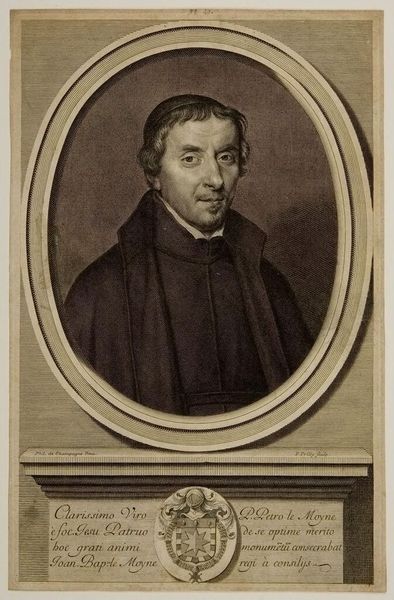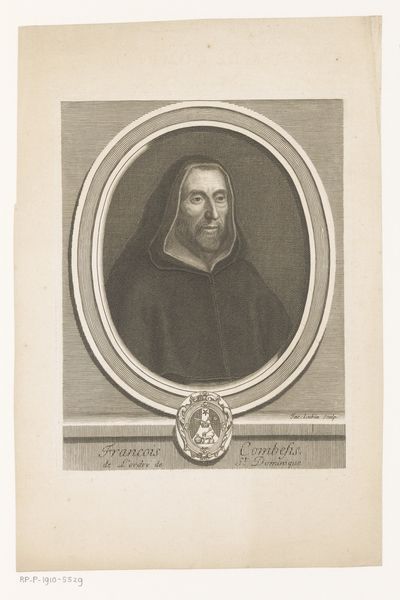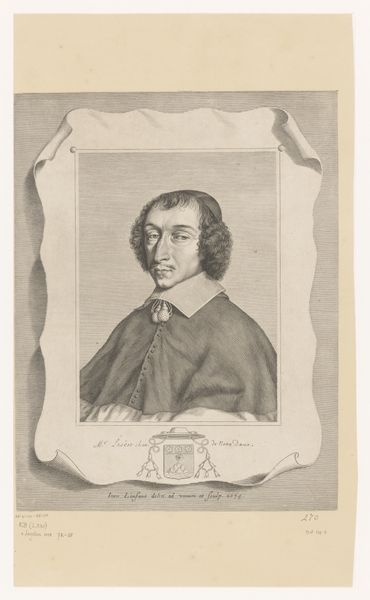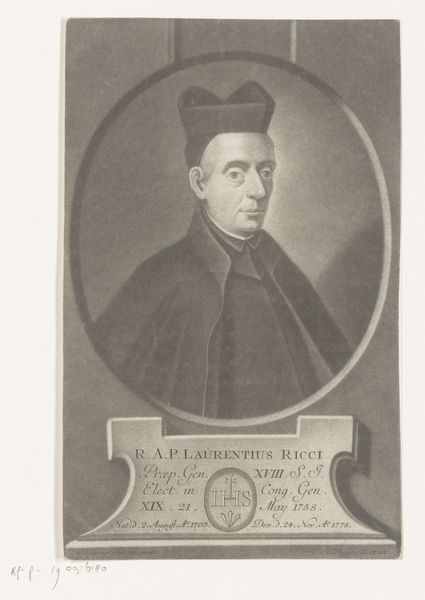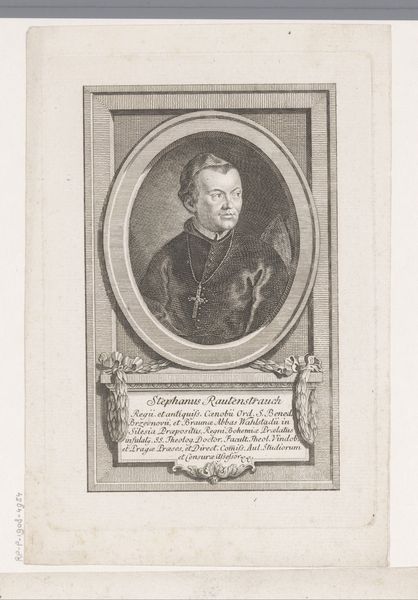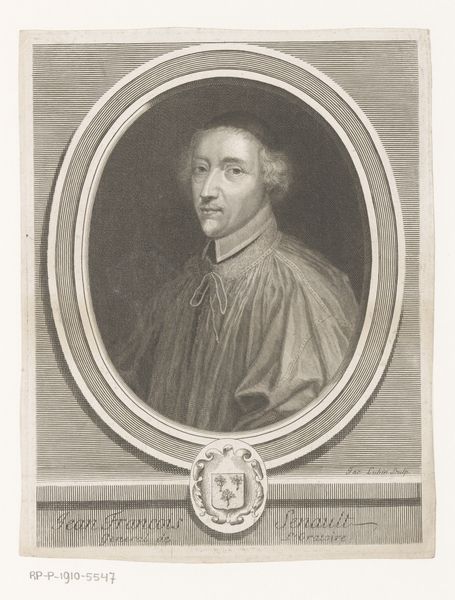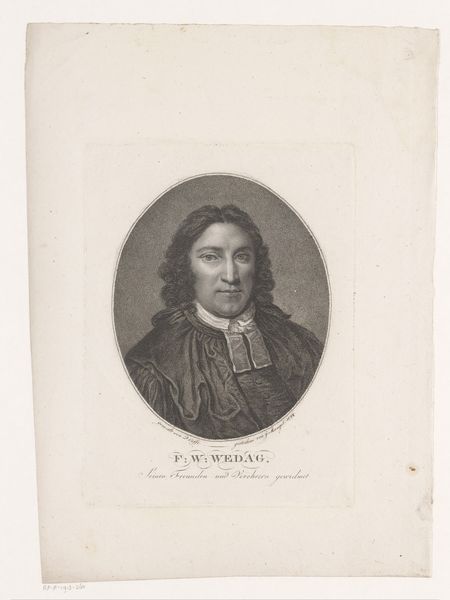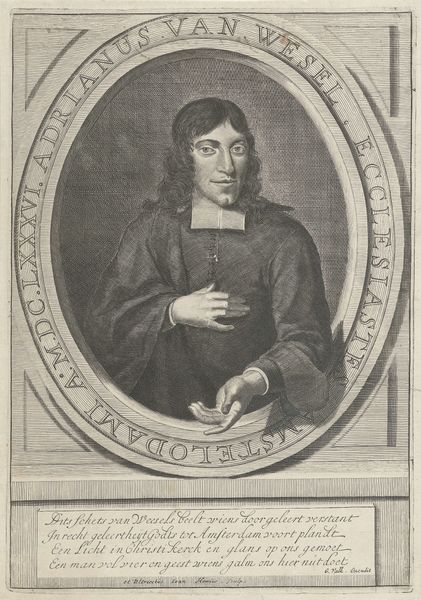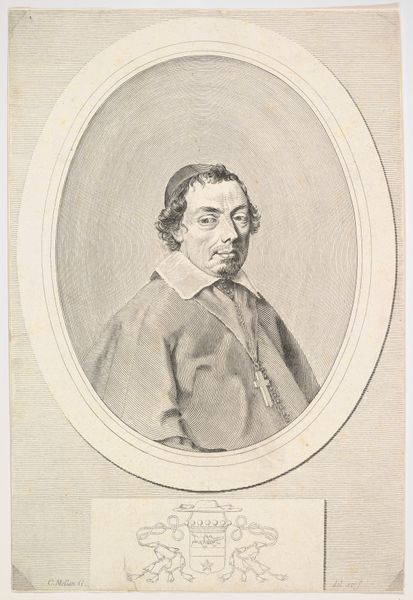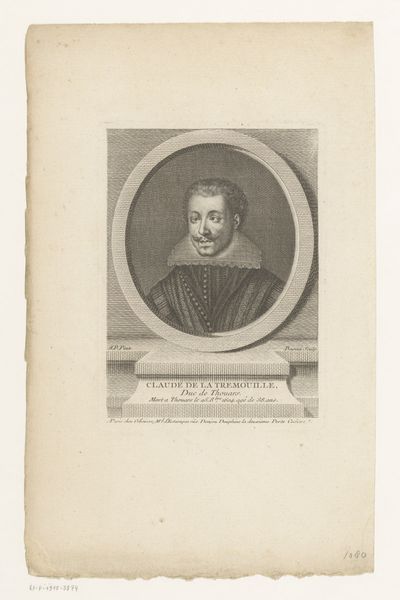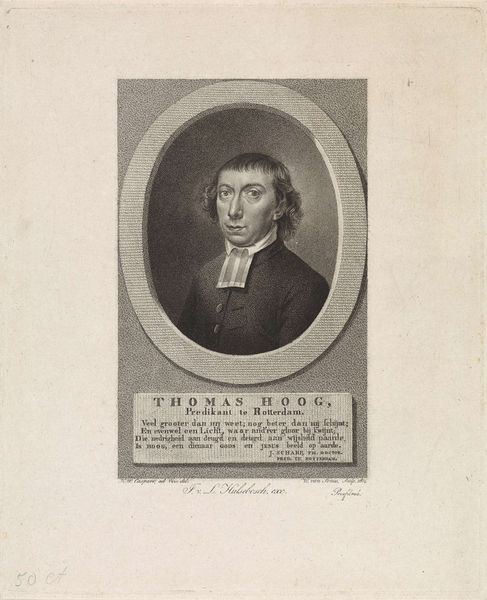
drawing, engraving
#
portrait
#
drawing
#
baroque
#
old engraving style
#
historical photography
#
history-painting
#
engraving
Dimensions: height 338 mm, width 217 mm
Copyright: Rijks Museum: Open Domain
Curator: This image before us, held within the Rijksmuseum, is a portrait of Pierre Le Moyne. The work dates sometime between 1632 and 1693, credited to Francois de Poilly. It’s rendered as an engraving. Editor: It's striking how immediate this feels. The clarity, the crisp lines, create a remarkable presence. There is almost an austerity to it, the oval framing drawing us toward the face. Curator: Considering its period, the portrait encapsulates aspects of Baroque style yet the subject's attire indicates much about clerical social hierarchy during the period, while the decorative elements below and within the frame reference his familial ties. Editor: Right, context is critical. How does this image function in the larger framework of religious authority and how portraiture like this reaffirms systems of power, or potentially, questions them through representation? Le Moyne's composed visage projects control. Curator: Indeed, this was a period when powerful families would support religious orders, influencing policy. The text below indicates a man of merit serving counsel perhaps indicating the intertwined nature of religion, law, and nobility. Editor: And that connection to history illuminates this portrait in terms of performativity; he’s not just Pierre Le Moyne, but a figure embodying institutional influence, which begs questions of accountability within powerful societal hierarchies and the visual strategies used to portray the men that shaped them. Curator: And yet there’s also a human element captured here, not simply institutional authority, this work attempts to record Le Moyne as both public and private. Engravings like this were powerful forms of circulating not only image but idea and lineage. Editor: Absolutely. Today, in the era of visual over-saturation, reflecting on the intention and the controlled spread of images reminds us that how individuals, particularly authority figures, were perceived then, resonates powerfully with image politics and power dynamics still. Curator: Seeing through this portrait a complex interplay of devotion and class provides us, I think, with a better grasp of the socio-political constructs structuring identity even today. Editor: And I will never not ponder the role of portraits and photography as both reflective and refractive devices to this power in art and life.
Comments
No comments
Be the first to comment and join the conversation on the ultimate creative platform.
